7 OLDEST TEMPLES
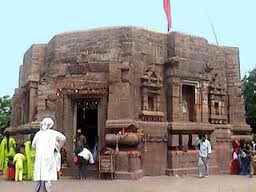
This temple is dedicated to Lord Shiva and his consort Shakti, and is considered one of the oldest Hindu temples in Bihar. This temple is also considered the oldest functional temple in the world. Believed to have been built in the Saka era, the Archaeological Survey of India (ASI) dates it to 108 AD. The temple has been built in the shape of an octagon – which is a rare style of construction. It is considered to be a specimen of the Nagara architectural style.
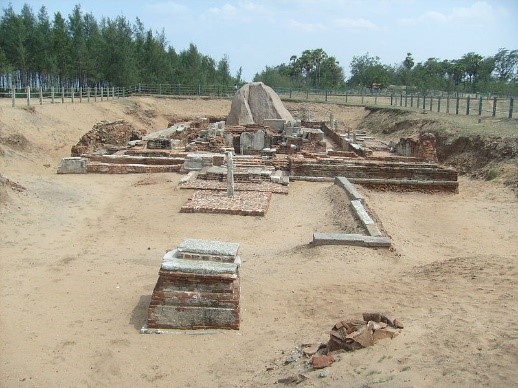
The Murugan Temple at Saluvankuppam, Tamil Nadu, is a shrine dedicated to the Hindu deity Murugan. Archaeologists believe that the shrine, unearthed in 2005, consists of two layers: a brick temple constructed during the Sangam period (the 3rd century BC to the 3rd century AD) and a granite Pallava temple dating from the 8th century AD and constructed on top of the brick shrine. The Archaeological Survey of India (ASI) team which conducted the excavation believe that brick temple could be the oldest of its kind to be discovered in Tamil Nadu. The temple was discovered by a team of archaeologists from the ASI based on clues found in a rock inscription left exposed by the 2004 Indian Ocean tsunami. Initially, excavations revealed an 8th-century Pallava-era shrine. Further excavations revealed that the 8th-century shrine had been built on the brick foundation of an earlier shrine. The brick shrine has been dated to the Sangam period.

The Lad Khan Temple, dedicated to Shiva, is one of the oldest Hindu temples and is located in Aihole in the state of Karnataka, India. It was built in the 5th century by the kings of the Chalukya dynasty. It is located to the south of the Durga temple, Aihole. The temple is named after a person named Lad khan, who turned this temple into his residence for a short period and this is the oldest temple of Aihole. The temple consists of a shrine (garba griha) with mandapa in front of it. The mukha mandapa is situated in front of the sanctum and consists of a set of 12 carved pillars. The sabha mandapa leads to the maha mandapa and the pillars are arranged to form two concentric squares. The walls have floral patterns on them and the windows have lattice work done in the northern style. Facing the sanctum, a second smaller sanctum is situated above the center of the hall whose outer walls have many carved images. Originally dedicated to Vishnu, now the main shrine houses a Shiva Linga with a Nandi. The temple was built in a Panchayatana style, indicating a very early experiment in temple construction. The special feature of this temple is that it starts with a rectangular structure and ends with a square structure. Based on a wooden construction design, the square and rectangular plan has a steep roof, which is an adaptation of wooden styles in stone.

Mamallapuram, also known as Mahabalipuram, is a town in Kancheepuram district in the Indian state of Tamil Nadu, around 60 km south of the city of Chennai. It is an ancient historic town and was a bustling seaport during the time of Periplus (1st century CE) and Ptolemy (140 CE), from where ancient Indian traders sailed to countries of South East Asia. By the 7th century it was a port city of the South Indian dynasty of the Pallavas. It has a group of sanctuaries carved out of rock in the 7th and 8th centuries: rathas (temples in the form of chariots), mandapas (cave sanctuaries), giant open-air rock reliefs such as the famous Descent of the Ganges, and the Shore Temple, with thousands of sculptures to the glory of Shiva. The Group of Monuments at Mahabalipuram has been classified as a UNESCO World Heritage Site. Chinese coins and Roman coins of Theodosius I in the 4th century CE have been found at Mahabalipuram revealing the port as an active hub of global trade in the late classical period. Two Pallava coins bearing legends read as Srihari and Srinidhi have been found at Mahabalipuram. The Pallava kings ruled Mahabalipuram from Kanchipuram; the capital of the Pallava dynasty from the 3rd century to 9th century CE, and used the port to launch trade and diplomatic missions to Sri Lanka and Southeast Asia. An 8th-century Tamil text written by Thirumangai Alvar described this place as Sea Mountain ‘where the ships rode at anchor bent to the point of breaking laden as they were with wealth, big trunked elephants and gems of nine varieties in heaps’. It is also known by several other names such as Mamallapattana and Mamallapuram. Another name by which Mahabalipuram has been known to mariners, at least since Marco Polo’s time is "Seven Pagodas" alluding to the Seven Pagodas of Mahabalipuram that stood on the shore, of which one, the Shore Temple, survives. According to local guides, the site's name changed during the centuries. The first name was Kațalmalai meaning "The land between the mountain and the sea" in Tamil. The second name was Mämalläpuram meaning "The land of the great wrestler" as the region was ruled by the Pallavan King Narsimhavarman during the 8th century who was known for his strength. The third name was and is still there is Mähäbalipuram meaning "The land of Mahabali". According to legends, he was the grandson of the devoted Prahlada.
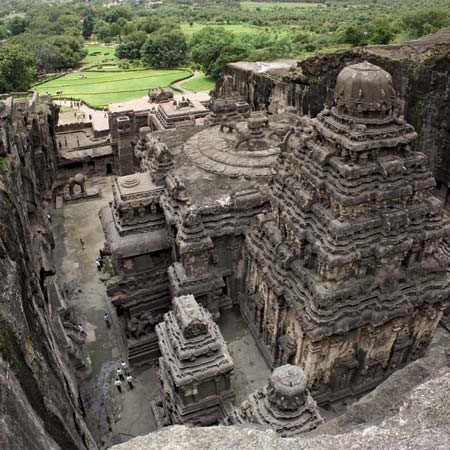
The kailash or kailasanath temple is one of the largest rock-cut ancient Hindu temples located in Ellora, Maharashtra, India. A megalith carved out of one single rock, it is considered one of the most remarkable cave temples in India because of its size, architecture and sculptural treatment. The Kailasanatha temple (Cave 16) is one of the 32 cave temples and monasteries known collectively as the Ellora Caves. Its construction is generally attributed to the 8th century Rashtrakuta king Krishna I in 756-773 CE. The temple architecture shows traces of Pallava and Chalukya styles. Kailasa temple features the use of multiple distinct architectural and sculptural styles. This, combined with its relatively large size, has led some scholars to believe that its construction spanned the reigns of multiple kings.
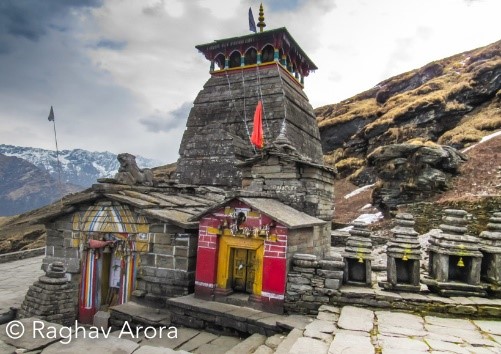
Tungnath is the highest Shiva temple in the world and is the highest of the five Panch Kedar temples located in the mountain range of Tunganath in Rudraprayag district, in the Indian state of Uttarakhand. The Tunganath (literal meaning: Lord of the peaks) mountains form the Mandakini and Alaknanda river valleys. Located at an altitude of 3,680 m (12,073 ft), and just below the peak of Chandrashila, Tungnath temple is the highest Hindu shrine dedicated to Lord Shiva. The temple is believed to be 1000 years old and is the third (Tritiya Kedar) in the pecking order of the Panch Kedars. It has a rich legend linked to the Pandavas, heroes of the Mahabharata epic. According to Hindu mythology Lord Shiva and his consort Parvati both reside in the Himalayas: Lord Shiva resides at Mount Kailash. Parvati is also called Shail Putri which means 'daughter of hills'. The Tunganath is indelibly linked to the origin of the Panch Kedar temples built by the Pandavas. The legend states that sage Vyas Rishi advised the Pandavas that since they were culpable of slaying their own relatives (Kauravas, their cousins) during the Mahabharata war or Kurukshetra war, their act could be pardoned only by Lord Shiva. Consequently, the Pandavas went in search of Shiva who was avoiding them since he was convinced of the guilt of Pandavas. In order to keep away from them, Shiva took the form of a bull and went into hiding in an underground safe haven at Guptakashi, where Pandavas chased him. But later Shiva’s body in the form of bull’s body parts rematerialized at five different locations that represent the "Panch Kedar" where Pandavas built temples of Lord Shiva at each location, to worship and venerate, seeking his pardon and blessings. Each one is identified with a part of his body; Tungnath is identified as the place where the bahu (hands) were seen: hump was seen at Kedarnath; head appeared at Rudranath; his navel and stomach surfaced at Madhyamaheshwar; and his jata (hair or locks) at Kalpeshwar. The priest at this temple is a local Brahmin from Makkumath village, unlike the other Kedar temples where the priests are from South India, a tradition set by the eighth century Hindu seer Sankaracharya. It is also said that the Maithani Brahmins officiate as priests at this temple. During the winter season, the temple is closed and the symbolic image of the deity and the temple priests are moved to Mukkumath, which is 19 km (12 mi) from here. It is near Duggalbitha 10 km (6 mi) before Chopta towards Ukhimath.
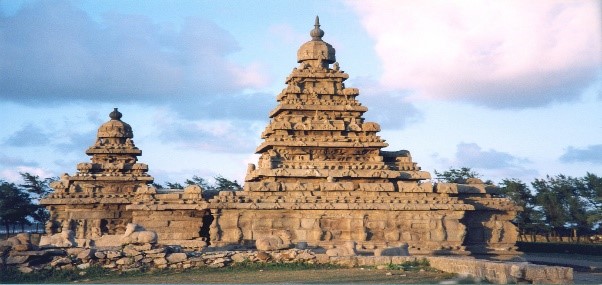
Adi Kumbeswarar Temple is a Hindu temple dedicated to the deity Shiva, located in the town of Kumbakonam in Tamil Nadu, India. Shiva is worshiped as Adi Kumbeswarar, and is represented by the lingam. His consort Parvati is depicted as Mangalambigai Amman. The presiding deity is revered in the 7th century Tamil Saiva canonical work, the Tevaram, written by Tamil saint poets known as the Nayanmars and classified as Paadal Petra Sthalam. The temple complex covers an area of 30,181 sq ft (2,803.9 m2) and houses four gateway towers known as gopurams. The tallest is the eastern tower, with 11 stories and a height of 128 feet (39 m) The temple has numerous shrines, with those of Kumbeswarar and Mangalambigai Amman being the most prominent. The temple complex houses many halls; the most notable is the sixteen-pillared hall built during the Vijayanagar period that has all the 27 stars and 12 zodiacs sculpted in a single stone. The temple has six daily rituals at various times from 5:30 a.m. to 9 p.m., and twelve yearly festivals on its calendar, with the Masi Magam festival celebrated during the Tamil month of Maasi (February - March) being the most prominent.The present masonry structure was built during the Chola dynasty in the 9th century, while later expansions are attributed to Vijayanagar rulers of the Thanjavur Nayaks of the 16th century. The temple is maintained and administered by the Hindu Religious and Charitable Endowments Department of the Government of Tamil Nadu.The Mahamaham festival takes place once every twelve years during the Tamil Month of Masi (February - March), when lakhs of pilgrims from various parts of India visit Kumbakonam to take a holy bath in the sacred Mahamaham tank which is located in the heart of the town. The festival has archaeological and epigrahical evidence. Tulapurushadaram, the practise of weighing oneself against gold and donating to the temple was effected by Govinda Dikshitar and the funds were utilised for funding the construction of the 16 mandapas around the tank.[17] Krishnadeva Raya (1509–1529 CE) is believed to have witnessed the Mahamaham festival during this time. He made donations to the temple on this occasion is found in another inscription. 12 Shiva temples are connected with Mahamaham festival which happens once in 12 years in Kumbakonam.